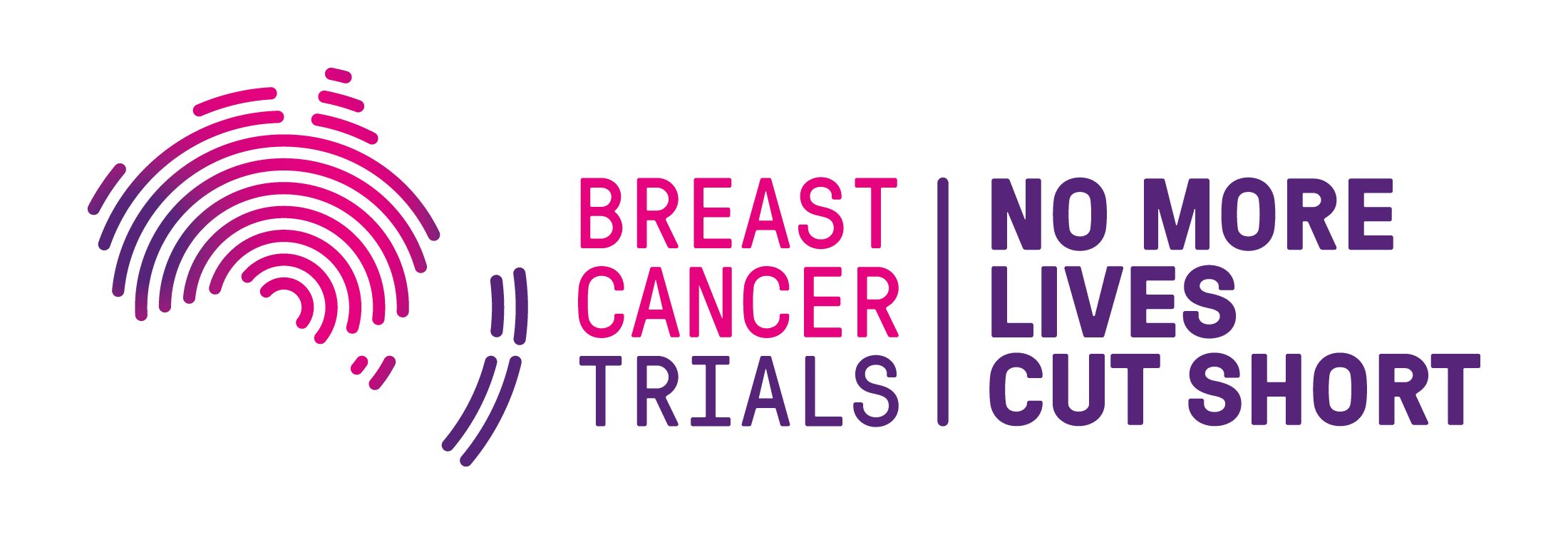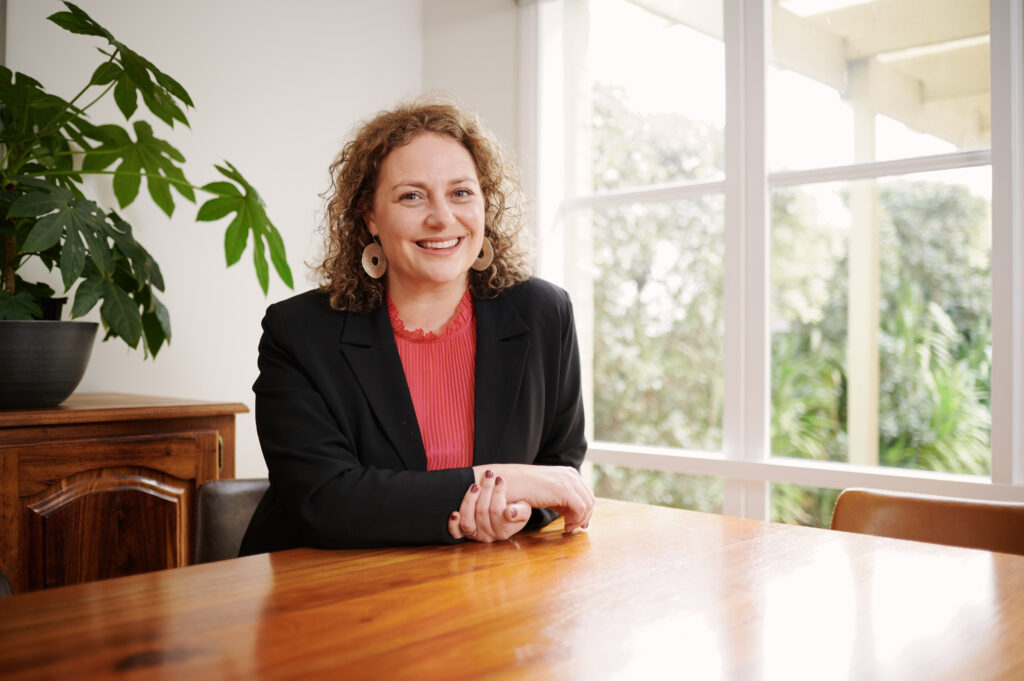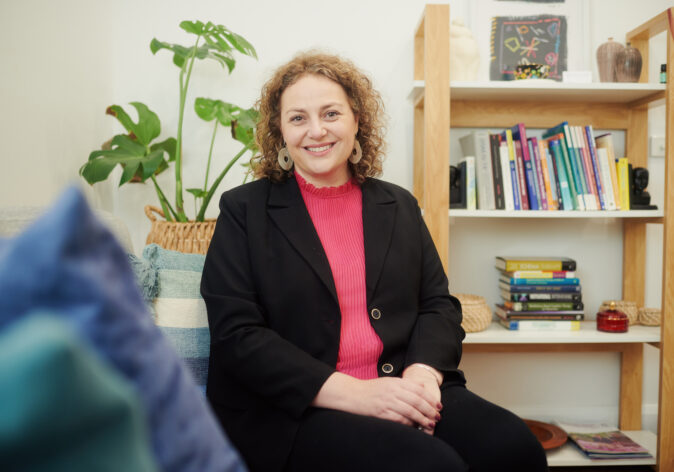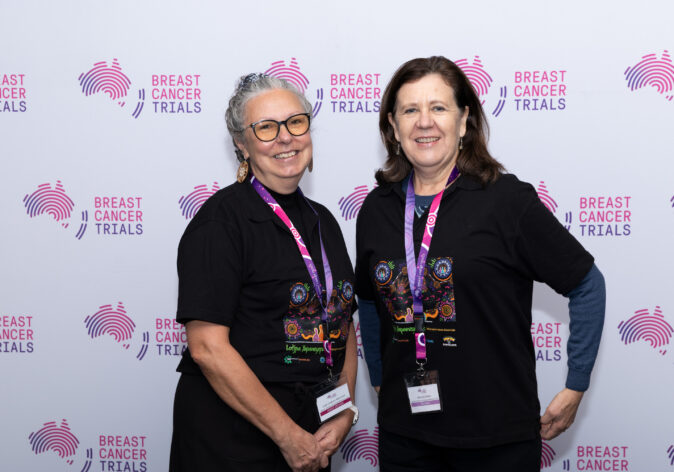Choosing Your Path and Navigating Difficult Treatment Decisions
What happens when patients say no to recommended treatments? Refusal and the search for alternatives can be confronting for both patients and clinicians.
Associate Professor Lesley Stafford explores why some patients take this path, what it means for their outcomes, and how the medical community can better navigate these difficult conversations.
“I think to start us off we should just clarify the word ‘refuses’. So, I think there’s something a little bit paternalistic about that word refuses. You know, horses refuse to jump, dogs refuse to walk on the lead. People make choices. So, I think we need to be careful about refusal and think more about patient choices, and how people make decisions.”
“I just wanted to put that out there. So, when we think about how common this is, it’s kind of hard to really get good data because the people who decline treatment tend to be less engaged with our services. And often because of the way they interact with health services, once they’ve declined treatment, they often don’t come back.”
“But the general consensus is that it’s about 1 in 10 women with breast cancer will decline at least one form of conventional therapy, in other words, chemotherapy, radiation, hormonal therapy or surgery.”
“There’s a little bit more work on this and it’s from very large databases in the US. We know that it’s often the younger age, higher income, higher educational status, less comorbidity individuals. So those tend to be the sort of demographic clinical factors, the more sort of psychological factors tend to be things like wanting more control over what goes into your body, wanting more decisional control, or already having a practise where you use an alternative therapy or complementary therapy.”
“In the in the past, a number of these women have a mistrust of the pharmaceutical industry and a number of them have witnessed a great deal of suffering in people they’ve loved family members for instance, who’ve had conventional therapy. So, there’s often an underlying trauma there.”
“One of the really interesting bits about women and people who decline conventional therapy is the doctor-patient relationship. So, we have a bit of data now that shows that there’s a sense where the patients have talked to their doctor about an alternative therapy. The doctor’s been dismissive, and has scared them, or has pressurised them, and they’re afraid of all the side effects that will come with conventional therapy.”
“And they disengage and seek an alternate therapy that promises them a cure with no side effects.”
Listen to the podcast
Associate Professor Lesley Stafford explores why some patients take this path, what it means for their outcomes, and how the medical community can better navigate these difficult conversations.
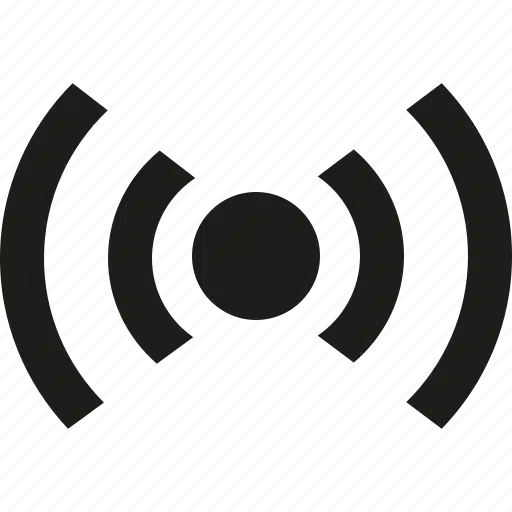
Key takeaways
1. It’s about patient choice — not “refusal.”
Lesley Stafford challenges the language of “refusal,” framing these decisions as patient choices rooted in values and personal experiences, not defiance. Many who decline standard treatments seek control over their health, have prior trauma linked to conventional medicine, or hold mistrust toward the pharmaceutical industry. These choices are complex, informed by autonomy and emotion rather than simple rejection of science.
2. Alternative and complementary therapies carry serious risks.
Data shows patients who replace proven therapies with alternative treatments face a fivefold higher risk of death, while those who combine complementary therapies with conventional care face a twofold higher risk. Yet, misinformation online — often highly engaging and persuasive — continues to fuel false hope. This creates a significant challenge for evidence-based medicine, which struggles to compete with viral, oversimplified claims.
3. The doctor–patient relationship is pivotal.
Breakdowns in trust or dismissive communication often drive patients away from conventional care. When doctors appear judgmental, adversarial, or sarcastic, patients may disengage entirely. Compassionate, empathetic communication — validating fears, explaining evidence clearly, and keeping the door open for future dialogue — is essential to maintaining connection and potentially guiding patients back to evidence-based care.
4. Reframing the clinician’s role: empathy, respect, and realism.
Clinicians must reframe these encounters from a “me versus you” stance to a shared goal of patient wellbeing. Respecting patient autonomy — even when choices conflict with medical advice — is vital. Training should emphasize communication skills, empathy, and realistic discussion of side effect management. Structural pressures like short consultation times remain a major barrier to these nuanced conversations.
What are some of the challenges that clinicians might face when trying to support a patient who is refusing a certain treatment regime?
“It’s very challenging, and it’s a rare thing, but when it happens it’s really stressful for the clinician for a number of reasons. One is that we know that if a patient uses an alternate therapy instead of a conventional treatment, they have a 5-fold higher risk of death.”
“If they use a complementary treatment, which means they’re using a treatment in addition to a regular proven treatment, they have a 2-fold higher risk.”
“So the stakes are very high, and for your average physician or doctor, who values science, and values evidence, and is accustomed to bringing a sense of control to a messy and predictable environment and who’s ethos whose work is to make people better – when somebody says, I choose not to have this, that’s a real challenge because there’s that recognition that you can’t make this person better.”
“It really challenges your identity as a healer. We want to do the best we can to make our patients well and this kind of makes it impossible. So, it’s also very time consuming often because what happens is doctors get into almost like an adversarial engagement with this person who is making a choice that the doctor thinks is wrong.”
“And of course in medicine, we think in terms of dichotomies. We think in terms of high risk versus low risk, or young versus old people. Patients don’t think like that. Patients are making decisions based on their values, based on their experience. So, the doctor’s expertise is important, but it’s not the most important thing. Quality of life is often more important than length of life from a patient’s perspective. So that it’s quite challenging for the doctor, who is looking after the patient.”
“I think as clinicians, we need to reframe those situations and really recognise that being adversarial or trying to scare your patient or being sarcastic or any of those things is creating this “me versus you” scenario when really, you’re on the same side. Both of you want the same thing, which is that you both want the person to be well.”
How should these conversations take place where someone has decided they don’t want to go down a certain treatment route?
“When you refrain it as saying we’re on the same side, how can we work together to look after you in a way that’s consistent with your values? Some doctors might say, well, that’s not possible. Some might say, if you don’t want to take this treatment that will save your life or you’ve got rocks in your head, right? But that doesn’t leave you with much wiggle room then to work with someone in a compassionate way or to leave the door open for them to come back if they change their mind.”
“Because we don’t want to create a situation where we shame the person who has chosen an alternative therapy over a conventional therapy and then their disease progresses, and they come back, or they don’t come back because they feel too ashamed to do that. So, I think our doctors need to be very explicit in their empathy and show that they really understand.”
“You do that by saying things like, I can see how important your health is to you. I can see that you’ve been doing a lot of reading online about different treatments and I can tell you’re really scared about side effects. I know this is a lot to take in. I understand these are big decisions, so you should be really explicit with empathy, it’s really important.”
“The other thing that’s really important is to explain what the problem is, not just to say no, that that can’t work, but instead something like “I wish it were as simple as a vegan diet, I wish it were, but it’s not. I’m really worried that a vegan diet alone is not going to cure your cancer, and let me show you a paper, or let me show you some evidence where it’s described what happens when people follow these different kinds of treatments.”
“So, to kind of explain what you’re thinking is another thing that’s really important when trying to keep the door open and be compassionate. And, one final strategy that can be really helpful is to extend your system, or to suggest a second opinion from someone else.”
“If a patient is getting too angry, too upset, or too tense, it can be helpful for you to say, why don’t you have a chat with my colleague? She might have a different approach; she might have something different. So, I think there are ways to manage it.”
When a patient does refuse a standard treatment, how should clinicians go about identifying alternate therapies?
“It depends a little bit. We have proven therapies, and we have unproven therapies. So, in Australia, what our doctors are offering are the proven therapies when somebody wants to use an alternative therapy. And by alternative, I mean they’re not using a proven therapy at all.”
“It’s very difficult for our doctors to support that, when we know that there is no evidence for it in terms of its curative capacity. It might be very nice to have that treatment, massage or relaxation or deep breathing or to take certain supplements. It may help with side effects, but ultimately those are supportive things. They don’t work, and we can’t ask our doctors to support that – It goes against everything we believe in.”
“When you’re using a complementary therapy, in other words, you have accepted at least one conventional therapy, but you’re also using a naturopath or homoeopath or something like that, most medical oncologists will say, can we just have the pharmacist have a look at the ingredients of what you’re taking? Because sometimes even natural products interfere with chemotherapies and oestrogen blockers and so on.”
“And so, they might ask for that, but it’s otherwise it’s sort of outside of our remit. I do think our doctors can do a bit more to almost inoculate patients about the misinformation that’s around. But you know, there was a study done through the American Society of Clinical Oncology (ASCO) that showed that something like 40% of people believe in unproven therapies that can cure cancer.”
“And then another study looked at the amount of misinformation online on Facebook, Reddit and Twitter. And one in every three articles that they looked at contained some kind of misinformation or some of it was harmful actually. But what was really scary was that the more harmful it was, the more misinformed the article was, the more engagement it had, the so the more likes and the more commenting it received, and that’s it’s very hard for evidence-based medicine to meet that.”
“You know, we can’t have doctors really being first line responders online. How do you condense a systemic review into a reel? You can’t.”
“There’s huge demand on the system and it’s kind of where the distress really sets in for the doctor because there isn’t enough time to do all these things as well as they would like to do them.”
What do you think need to change in the system to better support these complex treatment decisions and to meet a common ground?
“Really reframing that conversation in your own mind that it’s not a me versus you. It’s not just that you’re the doctor so you have to be right. We approach this differently. And yes, one treatment made has evidence has its basis and the other one doesn’t, which puts a doctor in a very difficult position.”
“But we have to accept that people who have the cognitive capacity to do that, make choices and we don’t have to like their choices, but we ultimately need to respect them. And that that’s difficult to do when you’re invested in the process and you are a doctor whose job is to make people better and in that particular instance, you can’t.”
“So, it’s that reframing, it’s thinking about the language you use. It’s the showing more empathy, and more compassion. The doctor-patient relationship is so important. And we see that from the data. We see situations where doctors are dismissive and don’t listen and are disinterested, and people are more likely to turn away from conventional medicine.”
“When we talk about side effects, which people are terrified of when it comes to chemotherapy, often we give them a lot of information about side effects, but we don’t tell them what we can do to manage those side effects.”
“So, they’re left with a very uneven picture that can be very terrifying. There’s a bit of work to be done in that space, but where I think it’s particularly difficult, is that it takes time. It takes time to have these lengthy conversations with people. There’s so many things you need to cover in a session and those appointments are not very long.”
If you had a patient that was considering refusing a treatment, what would your advice be to them in making that decision and communicating that with their doctor?
“We know that a lot of a lot of patients don’t tell their doctor about complementary medicine use. And one of the systematic reviews showed that this is because they perceive doctors to be disinterested or they’re perceived to be irrelevant to what’s going on. And then again, this comes back to that doctor-patient relationship, that therapeutic relationship.”
“I think we want women to be as informed as they can be about the choices that they make. That’s all we can ultimately ask of people, is that they make choices with their eyes wide open and that when something promises something too good to be true, it probably isn’t true.”
“So, when looking online at things and you come across something that promises a cure and it just looks really too good to be true – my flags would go up I think with a lot of the complementary treatments. I’m certainly not saying these treatments are useless. They have their use and that use is often in terms of supportive management, coping with side effects, you know, being fitter, being healthier, being less stressed. That’s very different though, from actually targeting cancer cells.”
“So, we can only ask people to be honest with their clinicians, to be educated about what they do and to make those choices in an informed way. There’s quite a bit of work to do in combating ideas around the evils of the pharmaceutical industry, and I suppose that’s a topic for another day. But those are my thoughts on that.”
QUICK ACCESS
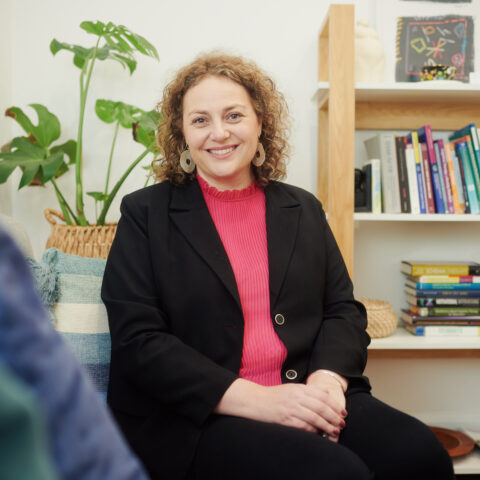
Associate Professor Lesley Stafford
Support Breast Cancer Research
Choosing Your Path and Navigating Difficult Treatment Decisions
Associate Professor Lesley Stafford explores why some patients take this path, what it means for their outcomes, and how the medical community can better navigate these difficult conversations.
Podcast Transcript
-
Choosing Your Path and Navigating Difficult Treatment Decisions
Choosing Your Path and Navigating Difficult Treatment Decisions
What happens when patients say no to recommended treatments? Refusal and the search for alternatives can be confronting for both patients and clinicians.
Associate Professor Lesley Stafford explores why some patients take this path, what it means for their outcomes, and how the medical community can better navigate these difficult conversations.
“I think to start us off we should just clarify the word ‘refuses’. So, I think there’s something a little bit paternalistic about that word refuses. You know, horses refuse to jump, dogs refuse to walk on the lead. People make choices. So, I think we need to be careful about refusal and think more about patient choices, and how people make decisions.”
“I just wanted to put that out there. So, when we think about how common this is, it’s kind of hard to really get good data because the people who decline treatment tend to be less engaged with our services. And often because of the way they interact with health services, once they’ve declined treatment, they often don’t come back.”
“But the general consensus is that it’s about 1 in 10 women with breast cancer will decline at least one form of conventional therapy, in other words, chemotherapy, radiation, hormonal therapy or surgery.”
“There’s a little bit more work on this and it’s from very large databases in the US. We know that it’s often the younger age, higher income, higher educational status, less comorbidity individuals. So those tend to be the sort of demographic clinical factors, the more sort of psychological factors tend to be things like wanting more control over what goes into your body, wanting more decisional control, or already having a practise where you use an alternative therapy or complementary therapy.”
“In the in the past, a number of these women have a mistrust of the pharmaceutical industry and a number of them have witnessed a great deal of suffering in people they’ve loved family members for instance, who’ve had conventional therapy. So, there’s often an underlying trauma there.”
“One of the really interesting bits about women and people who decline conventional therapy is the doctor-patient relationship. So, we have a bit of data now that shows that there’s a sense where the patients have talked to their doctor about an alternative therapy. The doctor’s been dismissive, and has scared them, or has pressurised them, and they’re afraid of all the side effects that will come with conventional therapy.”
“And they disengage and seek an alternate therapy that promises them a cure with no side effects.”
What are some of the challenges that clinicians might face when trying to support a patient who is refusing a certain treatment regime?
“It’s very challenging, and it’s a rare thing, but when it happens it’s really stressful for the clinician for a number of reasons. One is that we know that if a patient uses an alternate therapy instead of a conventional treatment, they have a 5-fold higher risk of death.”
“If they use a complementary treatment, which means they’re using a treatment in addition to a regular proven treatment, they have a 2-fold higher risk.”
“So the stakes are very high, and for your average physician or doctor, who values science, and values evidence, and is accustomed to bringing a sense of control to a messy and predictable environment and who’s ethos whose work is to make people better – when somebody says, I choose not to have this, that’s a real challenge because there’s that recognition that you can’t make this person better.”
“It really challenges your identity as a healer. We want to do the best we can to make our patients well and this kind of makes it impossible. So, it’s also very time consuming often because what happens is doctors get into almost like an adversarial engagement with this person who is making a choice that the doctor thinks is wrong.”
“And of course in medicine, we think in terms of dichotomies. We think in terms of high risk versus low risk, or young versus old people. Patients don’t think like that. Patients are making decisions based on their values, based on their experience. So, the doctor’s expertise is important, but it’s not the most important thing. Quality of life is often more important than length of life from a patient’s perspective. So that it’s quite challenging for the doctor, who is looking after the patient.”
And so how should these conversations take place where someone has decided they don’t want to go down a certain treatment route?
“I think as clinicians, we need to reframe those situations and really recognise that being adversarial or trying to scare your patient or being sarcastic or any of those things is creating this “me versus you” scenario when really, you’re on the same side. Both of you want the same thing, which is that you both want the person to be well.”
“And so, when you refrain it as saying we’re on the same side, how can we work together to look after you in a way that’s consistent with your values? Some doctors might say, well, that’s not possible. Some might say, if you don’t want to take this treatment that will save your life or you’ve got rocks in your head, right? But that doesn’t leave you with much wiggle room then to work with someone in a compassionate way or to leave the door open for them to come back if they change their mind.”
“Because we don’t want to create a situation where we shame the person who has chosen an alternative therapy over a conventional therapy and then their disease progresses, and they come back, or they don’t come back because they feel too ashamed to do that. So, I think our doctors need to be very explicit in their empathy and show that they really understand.”
“You do that by saying things like, I can see how important your health is to you. I can see that you’ve been doing a lot of reading online about different treatments and I can tell you’re really scared about side effects. I know this is a lot to take in. I understand these are big decisions, so you should be really explicit with empathy, it’s really important.”
“The other thing that’s really important is to explain what the problem is, not just to say no, that that can’t work, but instead something like “I wish it were as simple as a vegan diet, I wish it were, but it’s not. I’m really worried that a vegan diet alone is not going to cure your cancer, and let me show you a paper, or let me show you some evidence where it’s described what happens when people follow these different kinds of treatments.”
“So, to kind of explain what you’re thinking is another thing that’s really important when trying to keep the door open and be compassionate. And, one final strategy that can be really helpful is to extend your system, or to suggest a second opinion from someone else.”
“If a patient is getting too angry, too upset, or too tense, it can be helpful for you to say, why don’t you have a chat with my colleague? She might have a different approach; she might have something different. So, I think there are ways to manage it.”
When a patient does refuse a standard treatment, how should clinicians go about maybe identifying alternate therapies?
“It depends a little bit. We have proven therapies, and we have unproven therapies. So, in Australia, what our doctors are offering are the proven therapies when somebody wants to use an alternative therapy. And by alternative, I mean they’re not using a proven therapy at all.”
“It’s very difficult for our doctors to support that, when we know that there is no evidence for it in terms of its curative capacity. It might be very nice to have that treatment, massage or relaxation or deep breathing or to take certain supplements. It may help with side effects, but ultimately those are supportive things. They don’t work, and we can’t ask our doctors to support that – It goes against everything we believe in.”
“When you’re using a complementary therapy, in other words, you have accepted at least one conventional therapy, but you’re also using a naturopath or homoeopath or something like that, most medical oncologists will say, can we just have the pharmacist have a look at the ingredients of what you’re taking? Because sometimes even natural products interfere with chemotherapies and oestrogen blockers and so on.”
“And so, they might ask for that, but it’s otherwise it’s sort of outside of our remit. I do think our doctors can do a bit more to almost inoculate patients about the misinformation that’s around. But you know, there was a study done through the American Society of Clinical Oncology (ASCO) that showed that something like 40% of people believe in unproven therapies that can cure cancer.”
“And then another study looked at the amount of misinformation online on Facebook, Reddit and Twitter. And one in every three articles that they looked at contained some kind of misinformation or some of it was harmful actually. But what was really scary was that the more harmful it was, the more misinformed the article was, the more engagement it had, the so the more likes and the more commenting it received, and that’s it’s very hard for evidence-based medicine to meet that.”
“You know, we can’t have doctors really being first line responders online. How do you condense a systemic review into a reel? You can’t.”
What do you think needs to change in the system or in training or in a patient and clinician relationship to better support these like complex treatment decisions and to meet like a common ground?
“Really reframing that conversation in your own mind that it’s not a me versus you. It’s not just that you’re the doctor so you have to be right. We approach this differently. And yes, one treatment made has evidence has its basis and the other one doesn’t, which puts a doctor in a very difficult position.”
“But we have to accept that people who have the cognitive capacity to do that, make choices and we don’t have to like their choices, but we ultimately need to respect them. And that that’s difficult to do when you’re invested in the process and you are a doctor whose job is to make people better and in that particular instance, you can’t.”
“So, it’s that reframing, it’s thinking about the language you use. It’s the showing more empathy, and more compassion. The doctor-patient relationship is so important. And we see that from the data. We see situations where doctors are dismissive and don’t listen and are disinterested, and people are more likely to turn away from conventional medicine.”
“When we talk about side effects, which people are terrified of when it comes to chemotherapy, often we give them a lot of information about side effects, but we don’t tell them what we can do to manage those side effects.”
“So, they’re left with a very uneven picture that can be very terrifying. There’s a bit of work to be done in that space, but where I think it’s particularly difficult, is that it takes time. It takes time to have these lengthy conversations with people. There’s so many things you need to cover in a session and those appointments are not very long.”
“There’s huge demand on the system and it’s kind of where the distress really sets in for the doctor because there isn’t enough time to do all these things as well as they would like to do them.”
If you had a patient that was considering refusing a treatment, what would your advice be to them in ultimately making that decision and also communicating that with their doctor?
“We know that a lot of a lot of patients don’t tell their doctor about complementary medicine use. And one of the systematic reviews showed that this is because they perceive doctors to be disinterested or they’re perceived to be irrelevant to what’s going on. And then again, this comes back to that doctor-patient relationship, that therapeutic relationship.”
“I think we want women to be as informed as they can be about the choices that they make. That’s all we can ultimately ask of people, is that they make choices with their eyes wide open and that when something promises something too good to be true, it probably isn’t true.”
“So, when looking online at things and you come across something that promises a cure and it just looks really too good to be true – my flags would go up I think with a lot of the complementary treatments. I’m certainly not saying these treatments are useless. They have their use and that use is often in terms of supportive management, coping with side effects, you know, being fitter, being healthier, being less stressed. That’s very different though, from actually targeting cancer cells.”
“So, we can only ask people to be honest with their clinicians, to be educated about what they do and to make those choices in an informed way. There’s quite a bit of work to do in combating ideas around the evils of the pharmaceutical industry, and I suppose that’s a topic for another day. But those are my thoughts on that.”
